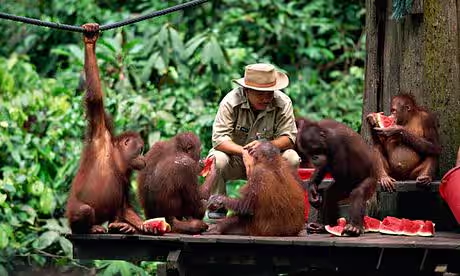As demand for travel rebounds across the globe, discover how to indulge in Southeast Asia’s most spectacular destinations while treading lightly on this fragile paradise
After spending over a decade exploring Southeast Asia’s evolving luxury travel landscape, I’ve witnessed a remarkable transformation in how sustainability and indulgence intersect. What was once a niche concern has blossomed into a fundamental shift that’s reshaping how we experience this extraordinary region. With a staggering 83% of travellers now citing sustainability as important according to recent industry research, the message is clear: responsible travel isn’t just admirable—it’s essential.
The paradox, of course, is that while we yearn to protect these precious destinations, we still crave the unforgettable experiences they offer. Having watched Thailand’s Maya Bay close to recover from over-tourism and seen Vietnam’s Ha Long Bay implement strict visitor controls, I’ve developed a profound appreciation for balancing conservation with exploration.
As we enter the prime booking window for Southeast Asia’s upcoming dry season, I’m sharing my hard-won insights on experiencing the region’s most magnificent destinations without leaving a destructive footprint. With tourism finally approaching full recovery after its pandemic decline, securing sustainable options requires both strategy and timing. Based on my years of experience booking Southeast Asian adventures, I’ve found that planning your trip 2-3 months in advance typically secures the best combination of availability and value, especially for eco-luxury properties that often have limited capacity.
Navigating Southeast Asia with a Light Carbon Footprint
The uncomfortable truth for those of us who cherish Southeast Asia’s far-flung paradises is that getting there often represents our journey’s largest environmental impact. Long-haul flights connecting Western countries to Southeast Asian hubs contribute significantly to tourism’s nearly 8% share of global greenhouse gas emissions. Yet the region’s extraordinary biodiversity and cultural tapestry make it impossible to simply advocate staying home.
I’ve found that making more conscious choices about how we fly can substantially reduce our impact. After numerous trips across the region, I’ve developed several strategies:
Choose airlines with newer fleets serving Southeast Asia. Singapore Airlines, for instance, has invested heavily in fuel-efficient aircraft like the A350 and Boeing 787 Dreamliner for routes connecting major hubs to secondary destinations. Thai Airways has also accelerated its fleet modernisation programme, replacing older aircraft with more efficient models on routes to emerging destinations like Siem Reap and Luang Prabang.
Book non-stop flights whenever possible. I’ve discovered that flying direct to major hubs like Bangkok, Singapore, or Kuala Lumpur before connecting to smaller destinations significantly reduces emissions compared to multiple short hops. Each takeoff and landing cycle dramatically increases a flight’s carbon footprint.
Consider the train renaissance once you’ve arrived. Southeast Asia is experiencing a rail revival that offers both luxury and sustainability. The Eastern & Oriental Express provides an opulent alternative for travelling between Singapore, Malaysia, and Thailand, while Vietnam’s reunification railway offers spectacular coastal scenery between Hanoi and Ho Chi Minh City. Having experienced both, I can attest that train travel through the region provides a depth of experience no flight can match.
Explore water transportation alternatives. For island destinations like Thailand’s Koh Samui or Indonesia’s Gili Islands, consider slower ferry options over speedboats or short-hop flights. Aqua Expeditions offers luxury small-ship cruising on the Mekong between Vietnam and Cambodia, providing a sustainable way to explore the region’s waterways in comfort.
Eco-Luxury Havens: Accommodation That Gives Back
Southeast Asia has become a global laboratory for sustainable luxury hospitality, with some of the world’s most innovative eco-resorts demonstrating that environmental consciousness and indulgence aren’t mutually exclusive. Through numerous stays across the region, I’ve identified properties that truly excel in both sustainability and guest experience:
Soneva Kiri, Thailand sets the standard for luxury eco-resorts with its closed-loop waste management system, organic gardens supplying 80% of produce, and extraordinary guest experiences like jungle dining pods accessed by zipline. Their coral restoration project has revitalised nearby reefs, while solar systems generate substantial clean energy. The resort’s “barefoot luxury” philosophy extends to detailed carbon footprint reporting for every stay.
Bawah Reserve, Indonesia reimagines private island luxury through strict sustainability principles. Accessible only by seaplane from Singapore, this exclusive retreat in the remote Anambas Islands limits guest numbers to protect its marine conservation area. Their permaculture gardens, rainwater harvesting, and solar desalination systems create a nearly self-sufficient paradise where indulgence doesn’t come at the environment’s expense.
Six Senses Ninh Van Bay, Vietnam demonstrates how luxury can harmonise with nature through its dramatic rock villa designs that minimise environmental disruption. The resort’s organic farm and coral restoration initiatives directly involve guests in sustainability efforts. Having stayed in one of their water villas, I was struck by how the architecture celebrates rather than dominates its spectacular bay setting.
For those seeking urban luxury between wilderness adventures, Parkroyal Collection Pickering in Singapore represents the future of sustainable city hotels. Its spectacular hanging gardens, solar-powered systems, and zero-waste initiatives have earned it multiple sustainability certifications. The property harvests rainwater to maintain its lush greenery while creating a cool microclimate that reduces energy needs.
When researching accommodations, I’ve found that regional certifications like Green Lotus (Vietnam), ASEAN Green Hotel Standard, and properties participating in EarthCheck certification typically demonstrate genuine commitment beyond marketing claims.

Properties like Six Senses Ninh Van Bay in Vietnam prove that sophisticated luxury and environmental stewardship can perfectly complement each other.
Culinary Consciousness: Savouring Southeast Asia Sustainably
Southeast Asian cuisine’s explosive flavours and diversity make it a primary attraction for luxury travellers. Yet our dining choices significantly impact both environmental sustainability and local communities. Through countless meals across the region, I’ve developed approaches that enhance rather than diminish the culinary experience:
Embrace plant-forward regional specialities. Many of Southeast Asia’s most delicious dishes are naturally plant-based or use minimal animal products. Vietnamese fresh spring rolls, Burmese tea leaf salad, Indonesian gado-gado, and countless Thai vegetable curries showcase the region’s plant-centric culinary traditions. Even dedicated carnivores might be surprised to find they don’t miss meat when sampling these vibrant dishes.
Seek out progressive fine dining committed to local sourcing. Establishments like Locavore in Bali, Bo.lan in Bangkok, and Labyrinth in Singapore have revolutionised luxury dining by building relationships with small-scale producers and foragers. These restaurants transform hyperlocal, seasonal ingredients into sophisticated tasting menus that support sustainable agriculture while offering unforgettable dining experiences.
Participate in the zero-kilometre dining movement. Many luxury properties now maintain on-site organic gardens and farms that supply their kitchens. Restaurants like The Farm at San Benito in the Philippines and The Datai Langkawi in Malaysia offer garden-to-table experiences where guests can harvest ingredients before watching them transform into exquisite meals.
Support marine conservation through seafood choices. Southeast Asia’s oceans face severe pressure from overfishing. Properties like Alila Villas Uluwatu in Bali partner with sustainable fishing communities and remove threatened species from their menus. Apps like the Marine Stewardship Council’s “Good Fish Guide” can help identify sustainable seafood options across the region.
Mindful Exploration: Beyond the Tourist Traps
Mass tourism has damaged many of Southeast Asia’s most iconic destinations. Over-tourism in places like Thailand’s Phi Phi Islands, Cambodia’s Angkor Wat, and Indonesia’s Ubud threatens both environmental health and authentic experiences. Through years of exploration, I’ve discovered approaches that provide more meaningful encounters while reducing negative impacts:
Visit popular sites during alternative timings. While most tourists flood Angkor Wat for sunrise, I’ve found that late afternoon offers equally magical light with significantly fewer crowds. Similarly, scheduling Ta Prohm for midday when most tours break for lunch provides a more contemplative experience of this atmospheric temple.
Explore secondary destinations. For every overrun attraction, Southeast Asia offers dozens of equally spectacular alternatives known mainly to locals. Instead of joining the masses at Vietnam’s Ha Long Bay, I’ve found Bai Tu Long Bay offers similar limestone karst landscapes with minimal crowds. Thailand’s Koh Yao islands provide the beauty of better-known Andaman Sea destinations without the over-tourism issues.
Engage with conservation initiatives. Luxury properties increasingly offer opportunities to participate in meaningful environmental efforts. Four Seasons Langkawi’s mangrove replanting programme and Song Saa Private Island’s marine conservation work in Cambodia provide engaging ways to contribute positively to destinations.
Choose ethical wildlife experiences. Southeast Asia offers extraordinary opportunities to encounter exotic species, but many animal attractions involve exploitation. Elephant sanctuaries like MandaLao in Laos and the Elephant Nature Park in Thailand provide ethical alternatives to riding programmes. The Bornean Sun Bear Conservation Centre and Sepilok Orangutan Rehabilitation Centre in Malaysian Borneo demonstrate responsible wildlife tourism that supports conservation.

Responsible wildlife experiences support conservation efforts while avoiding exploitation.
Packing for Paradise: Minimising Impact Through Preparation
The thoughtful traveller’s responsibility begins long before boarding the flight. Having refined my Southeast Asian packing strategy over numerous trips, I’ve found certain preparations significantly reduce environmental impact while enhancing the travel experience:
Invest in reef-safe sun protection. Southeast Asia’s marine environments suffer severe damage from conventional sunscreen chemicals. Mineral-based options using non-nano zinc oxide protect both skin and reefs. For the region’s intense tropical sun, I rely on Stream2Sea’s Mineral Sunscreen (formulated by marine biologists) and Raw Elements’ Face + Body tube, both thoroughly tested for reef safety.
Pack microplastic-filtering laundry bags. Products like Guppyfriend capture microplastics shed during washing, preventing them from entering waterways. This simple addition proves invaluable when washing synthetic activewear after jungle treks or diving excursions.
Bring portable water purification. Single-use plastic water bottles constitute a major waste stream across Southeast Asia. LARQ’s self-cleaning purification bottles or simple SteriPen systems eliminate the need for bottled water while ensuring safe hydration throughout the region.
Select biodegradable toiletries. Solid shampoo and conditioner bars from brands like Ethique eliminate plastic packaging while meeting luxury standards. Their tropical formulations stand up to Southeast Asia’s humidity while respecting fragile water treatment systems.
Consider destination-appropriate technical fabrics. Lightweight, quick-drying garments from sustainable brands like Patagonia and Reformation reduce the need for frequent laundering in water-stressed destinations while providing comfort in tropical climates.
The Path Forward: Committing to Conscious Luxury
As Southeast Asia’s tourism industry rebuilds after the pandemic’s devastating impact, we face a critical choice between returning to destructive patterns or embracing a more sustainable model. The region’s remarkable resilience offers hope, with innovative operators demonstrating that luxury and responsibility can coexist beautifully.
My journeys across Southeast Asia have convinced me that conscious travel doesn’t diminish the experience—it enhances it. The most memorable luxury comes not from excessive consumption but from extraordinary encounters with pristine environments and authentic cultures. By making thoughtful choices about transportation, accommodation, activities, and preparation, we can experience the region’s wonders while helping preserve them.
As you plan your next Southeast Asian adventure, remember that each decision—from which flight to book to which resort to choose—shapes both your experience and the region’s future. The true luxury of travel lies not in excess but in experiences that enrich rather than deplete these extraordinary destinations.
After all, Southeast Asia’s greatest indulgence is its irreplaceable natural and cultural heritage. By travelling thoughtfully, we can savour these treasures while ensuring they remain for generations to come—perhaps the most luxurious prospect of all.


